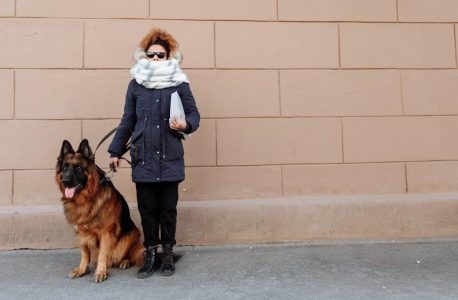Accurate measurements are key to finding the perfect jacket fit. This guide helps you understand sizing, ensuring comfort and style. Learn how to measure correctly for a flawless fit, avoiding sizing mishaps and ensuring your jacket matches your body perfectly, regardless of brand or style.
Overview of Jacket Measurement Importance
Jacket measurements are crucial for ensuring a perfect fit, as sizes vary significantly between brands and styles. Accurate measurements help determine the right size, avoiding overly tight or loose clothing. Chest size is often the most critical factor, but other measurements like sleeve length, shoulders, and waist also play a role. Proper fit enhances comfort and style, whether for tailored looks or layered outfits. Measuring ensures the jacket aligns with your body type and personal preferences. Without accurate measurements, finding the ideal fit becomes challenging, especially when shopping online or across different brands.
Why Accurate Measurements Are Crucial for Online Shopping
Accurate measurements are vital for online shopping, as they ensure the best fit without the ability to try jackets on. Sizing varies between brands, and relying on measurements helps avoid ill-fitting purchases. By taking precise body measurements, shoppers can match their dimensions to size charts, reducing the likelihood of returns. This process is especially important for online buyers, as it bridges the gap between generic size labels and actual fit. Investing time in measuring ensures a jacket that aligns with personal style and comfort, making online shopping more efficient and satisfying.

Key Measurements for Jacket Sizing
Accurate jacket measurements ensure a flawless fit, focusing on chest, shoulders, sleeves, and length. These key metrics help determine size and style alignment for optimal comfort and appearance.
Chest Measurement: The Most Critical Factor
Chest measurement is the most critical factor in determining jacket size, as it ensures the garment fits comfortably around the torso. To measure accurately, wrap a flexible tape measure around the broadest part of your chest, keeping the tape level and parallel to the floor. Stand upright with arms relaxed by your sides to ensure the measurement is not constricted. This measurement helps identify the ideal jacket size, especially for tailored or fitted styles. Inaccuracies here can lead to a poor fit, so precision is essential for both style and comfort.
Sleeve Length: How to Measure Accurately
Sleeve length is a crucial measurement for ensuring a proper fit. To measure accurately, start at the center back of your neck, just below the base of the skull, and run the tape measure over your shoulder, down to your wrist. Keep your arm relaxed by your side and the tape measure straight. This ensures the sleeve will fit comfortably without being too tight or too loose. Accurate sleeve length is essential for both style and functionality, making it a key factor in your jacket measurement guide.
Shoulder Measurements: Importance and Technique
Shoulder measurements are vital for ensuring a jacket fits properly. To measure accurately, place the tape measure across the back, starting from the tip of one shoulder and ending at the tip of the other. Keep the tape level and parallel to the floor for an accurate reading. This measurement helps determine the jacket’s structure and ensures it sits comfortably without slipping off. Correct shoulder measurements prevent a too-tight or too-loose fit, ensuring freedom of movement. For the best results, measure over a thin shirt to simulate wearing conditions. Accurate shoulder measurements are key to achieving a tailored look and optimal comfort.
Waist and Hip Measurements for Tailored Fit
Waist and hip measurements are essential for achieving a tailored fit, especially for jackets with a defined silhouette. To measure your waist, wrap the tape measure around the narrowest point of your natural waistline, typically just above the belly button. For hip measurements, place the tape measure around the widest part of your hips, usually 7-9 inches below the waistline. Keep the tape level and snug but not tight. These measurements help ensure the jacket sits comfortably and proportions correctly, avoiding a too-tight or overly loose fit. Accurate waist and hip measurements are crucial for styles designed to accentuate or follow the body’s curves.
Jacket Length: Determining the Perfect Fit
Jacket length is a critical factor in achieving a flattering and functional fit. To measure accurately, stand upright and place the tape measure from the base of the neckline (at the collarbone) to the desired hem length. The ideal length varies by style: shorter jackets (bomber or denim) typically hit at the hip, while longer styles (trench or overcoats) extend past the thigh. Consider your body proportions and the jacket’s purpose. A well-balanced length ensures coverage without overwhelming your frame. Proper length enhances both style and comfort, making it essential for a polished look.
Back Measurement: Shoulder to Shoulder
The back measurement, also known as the shoulder-to-shoulder measurement, is essential for ensuring the jacket fits comfortably and sits properly on the body. To measure, place the tape measure at the tip of one shoulder and extend it across the upper back to the tip of the other shoulder. This measurement helps determine the jacket’s width and ensures the shoulders align correctly. Accuracy is key to avoid a jacket that feels too tight or too loose. Proper alignment enhances both comfort and aesthetics, making this measurement vital for a well-fitted jacket.
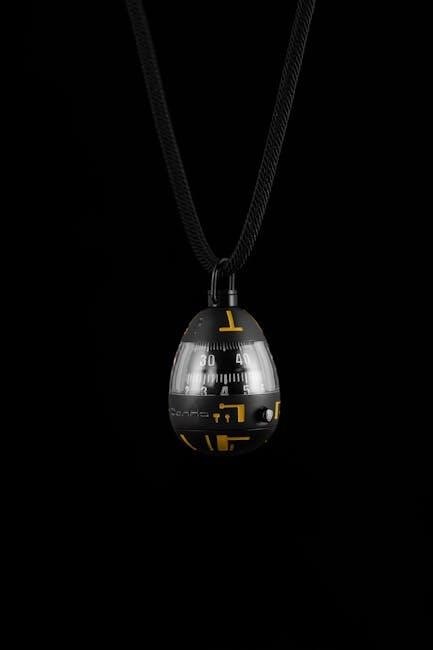
Understanding Jacket Size Charts
Jacket size charts are tools that match your measurements to sizes, ensuring a perfect fit. They vary by brand, so always refer to them when shopping online.
Interpreting Size Charts Effectively
Interpreting size charts effectively begins with comparing your body measurements to the chart. Start by locating the brand-specific size chart, as sizing can vary between brands. Align your chest, sleeve, shoulder, and length measurements with the corresponding sizes. Consider your body type; for example, broader shoulders or longer torsos may influence fit. If measurements fall between sizes, decide whether to size up or down based on personal fit preference. Check fabric type—stretchy fabrics may allow for a smaller size, while non-stretch fabrics require precise fit. Additionally, account for layering needs; thicker layers may necessitate a larger size. Finally, review customer reviews for insights on real-world fit. Accurate interpretation ensures the best fit tailored to your needs.
Comparing Body Measurements to Size Charts
Comparing body measurements to size charts ensures a precise fit. Start by aligning your chest, sleeve, shoulder, and jacket length measurements with the chart. Match each measurement to the corresponding size, ensuring accuracy. If your chest measures 40 inches, for example, look for the size that accommodates this. Sleeve length should align with your arm measurement, and shoulder width should match for proper fit. Double-check all measurements to avoid discrepancies. Consider personal fit preferences—tight, relaxed, or tailored. Accurate comparison ensures the jacket fits comfortably and meets your style needs, eliminating guesswork and enhancing satisfaction with your purchase.
Brand-Specific vs. Generic Size Charts
Brand-specific size charts are tailored to a particular brand’s fit and design, while generic charts provide standard measurements. Brand-specific charts often account for unique cuts, fabrics, or styling, ensuring a more accurate fit for that brand’s jackets. Generic charts, however, offer a one-size-fits-all approach, which may not align perfectly with every brand’s sizing. Understanding the differences is crucial for online shoppers, as relying solely on generic charts might lead to sizing errors. Always refer to the brand’s specific chart for precise measurements, especially when purchasing from a new or unfamiliar brand.

Using Size Charts for Custom Jackets
Using size charts for custom jackets ensures a tailored fit, as they allow for precise measurements. Custom jackets often require detailed specs like chest, shoulder, sleeve length, and waist. These charts help translate body measurements into garment dimensions. Some brands offer interactive tools or guides to input measurements directly. Accurate input is key, as custom jackets are made-to-measure. Double-checking measurements and comparing them to the chart reduces errors. This approach guarantees a jacket that fits perfectly, enhancing comfort and style. It’s especially useful for those with unique body types or specific fit preferences.

Measuring for Different Jacket Styles
Measuring for different jacket styles requires attention to specific details. Tailored jackets focus on chest, shoulders, and waist, while loose styles allow for a relaxed fit. Leather jackets often need precise body and sleeve measurements. Each style has unique requirements, so understanding these ensures the best fit. Accurate measurements are essential for comfort and aesthetics, regardless of the jacket type.
Measurements for Tailored or Fitted Jackets
For tailored or fitted jackets, precise measurements are key to achieving a sleek, polished look. Start with the chest measurement, taken around the fullest part of the chest while keeping the tape level. Shoulder measurements are crucial, ensuring the jacket sits comfortably without sagging. Sleeve length is measured from the center back of the neck to the wrist, and waist measurements are taken at the natural waistline for a defined fit. These measurements ensure the jacket hugs the body appropriately, providing both comfort and a sharp, tailored appearance. Accurate measurements are vital for a flawless fit in fitted styles.
Measurements for Loose or Oversized Jackets
For loose or oversized jackets, measurements focus on creating a relaxed, comfortable fit while maintaining style. Chest measurements are taken with the tape slightly loose, allowing room for layering or a casual look. Shoulder measurements are less critical, as the jacket is designed to sit broader. Sleeve length remains important but is often longer for an oversized effect. Jacket length is measured to ensure it aligns with the desired oversized aesthetic. These measurements prioritize comfort and style, ensuring the jacket drapes naturally without feeling restrictive. Loose-fit jackets are ideal for layering and offer a more relaxed, modern silhouette.
Specific Measurements for Leather or Bomber Jackets
Leather and bomber jackets require precise measurements to ensure a flattering, functional fit. Chest measurements should account for any layering, while shoulder measurements ensure the jacket sits naturally. Sleeve length is crucial, extending to the wrist for bombers or slightly shorter for leather styles. Jacket length varies, with bombers often hitting the hip and leather jackets tailored to the body. Accurate measurements ensure the jacket complements the wearer’s physique, balancing style with comfort. Use a flexible tape measure, keeping it snug but not tight, to capture these dimensions effectively for the desired aesthetic and fit.
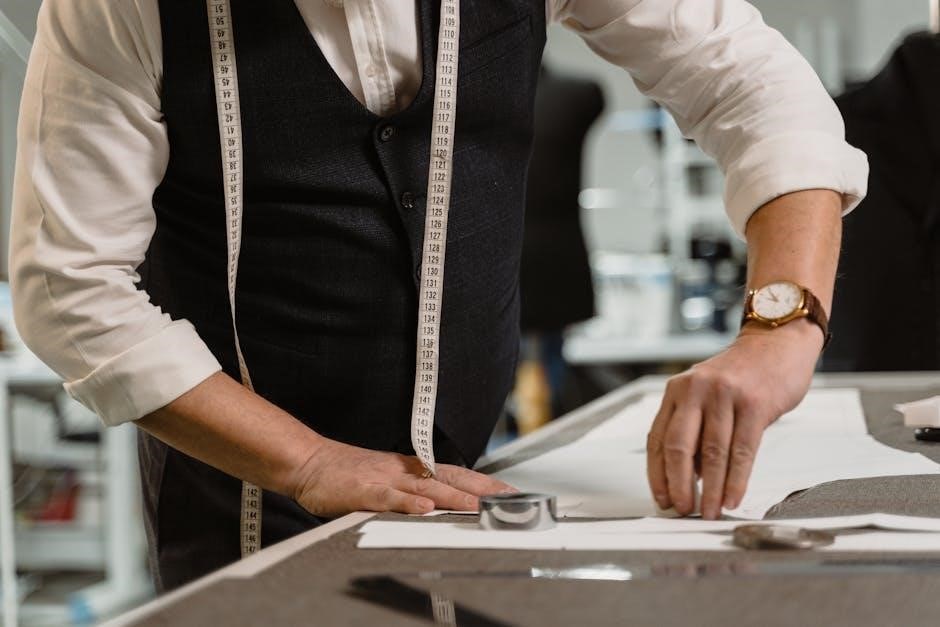
Factors Influencing Jacket Fit
Body type, layering needs, fabric thickness, and personal fit preferences significantly influence jacket fit, requiring adjustments to measurements for optimal comfort and style.
Understanding Body Type and Jacket Fit
Understanding your body type is crucial for selecting a jacket that fits well. Ectomorphs (slim builds) may prefer tailored styles to avoid overwhelmed silhouettes, while mesomorphs (athletic builds) can pull off structured designs. Endomorphs (curvier frames) benefit from jackets that create balance, such as longer lengths or A-line shapes. Body proportions, like torso length and shoulder width, also influence fit. For example, petites should avoid oversized jackets, and taller individuals can opt for elongated styles. Considering these factors ensures the jacket complements your physique, enhancing both comfort and aesthetics.
Layering Considerations for Jacket Sizing
Layering significantly impacts jacket sizing, as additional clothing underneath affects fit. To ensure comfort and functionality, consider the thickness of layers you plan to wear, such as sweaters, fleeces, or shirts. Measure your chest and shoulders over your thickest layer to determine the ideal jacket size. For instance, a ski jacket requires more room for insulation and layers, while a slim-fit jacket may need less. Neglecting layering considerations can result in a jacket that feels too tight or restrictive. Always check size charts with layering in mind to achieve the perfect balance of comfort and style.
Fabric Type and Its Impact on Fit
Fabric type plays a crucial role in determining jacket fit. Thicker materials like wool or denim require more room for comfort, while stretchy fabrics like spandex offer flexibility. Stiff fabrics, such as leather, may restrict movement, necessitating a slightly looser fit. Conversely, lightweight fabrics like polyester or nylon can fit snugly without feeling restrictive. Always consider the fabric’s thickness and stretch when measuring for a jacket, as these factors significantly influence how the garment drapes and fits. Using size charts tailored to specific fabric types ensures a more accurate and comfortable fit.
Personal Fit Preferences: Tight vs. Relaxed
Personal fit preferences significantly influence jacket sizing. A tight fit emphasizes a streamlined, modern look, ideal for tailored styles, while a relaxed fit offers comfort and ease of movement. Consider lifestyle and activity level: tight fits are best for formal occasions, while relaxed fits suit casual wear. Measure according to your preference by adjusting chest and sleeve measurements. Adding 1-2 inches ensures a relaxed fit, while keeping measurements precise achieves a tighter look. Balancing personal style with functionality ensures the perfect jacket fit for any occasion or purpose.

Tools and Resources for Measurement
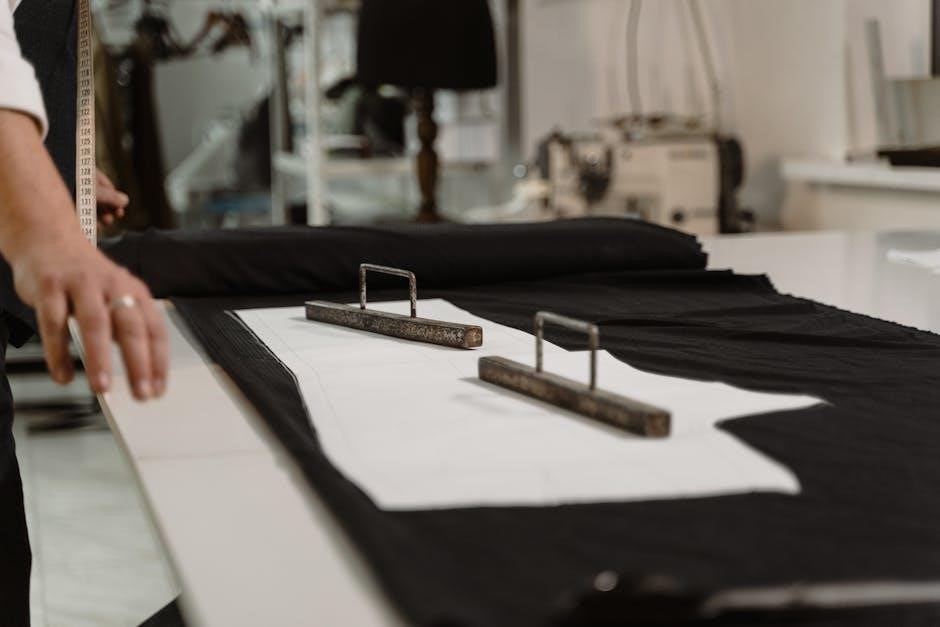
A flexible measuring tape, ruler, and mirror are essential for accurate jacket measurements. Online guides, size charts, and video tutorials provide additional support for precise sizing.
Essential Tools for Accurate Measurements
A flexible measuring tape is the primary tool for taking precise jacket measurements. A full-length mirror helps ensure proper alignment and visibility while measuring. Use a pen and notebook to record measurements clearly. For additional accuracy, a ruler can be used to measure shorter lengths. A second person can assist with difficult-to-reach areas, such as back measurements. Ensure the measuring tape is snug but not tight, and always measure over the same undergarments or clothing to maintain consistency. These tools will help achieve the most accurate results for a perfect jacket fit.
Online Resources and Video Guides
Utilize online resources and video guides to master jacket measurements. Official brand websites often provide detailed measurement guides tailored to their sizing charts. YouTube and Vimeo host tutorials demonstrating step-by-step measuring techniques. Measurement apps like SizeMe or MySizeID offer digital tools to track your dimensions. Additionally, many retailers, such as ASOS or Levi’s, provide interactive size guides; These resources ensure accuracy and help you understand how to measure correctly for different jacket styles. They often include visual aids and clear instructions, making the process easier for beginners. Regularly updated content keeps the information relevant and reliable for achieving the best fit.
Brand-Specific Measurement Tools and Tutorials
Many brands offer tailored measurement tools and tutorials to ensure accurate sizing for their jackets. For example, brands like Levi’s and ASOS provide detailed guides specific to their designs. These tools often include interactive size charts, video demonstrations, and step-by-step instructions. Some brands even offer virtual try-on features or apps to help measure your body accurately. By using brand-specific resources, you can better understand their unique sizing system and avoid discrepancies. These tools are particularly useful for brands with distinctive fits, such as slim-fit or oversized styles. They empower you to make informed decisions and achieve the perfect fit for your jacket.

Additional Tips and Considerations
Consider fabric stretch, layering needs, and personal comfort when selecting sizes. Double-check measurements for accuracy and consult customer reviews for fit insights. Ensure optimal comfort and style by prioritizing these factors.
- Account for fabric stretch and drape.
- Layering needs may require size adjustments.
- Personal comfort preferences matter greatly.
Trying Before Buying: When Possible
Trying jackets before purchasing ensures the best fit and eliminates sizing guesswork. Visit stores to test styles, check comfort, and confirm measurements. This step prevents returns and sizing errors. Pay attention to how the jacket sits on shoulders, chest, and sleeves. If shopping online, consider retailers offering free returns. Bring clothes you plan to layer underneath to gauge fit accurately. Don’t hesitate to seek a second opinion or use a mirror to assess the look and comfort. This hands-on approach guarantees satisfaction and confidence in your purchase. It’s a practical way to combine measurement accuracy with personal preference.
Using Existing Jackets as Measurement Guides
Using a well-fitting jacket as a reference can simplify the measurement process. Choose a jacket with a fit you like, and measure its key dimensions. Lay it flat to assess chest width, sleeve length, and shoulder fit. Compare these measurements to the size chart of the new jacket. This method avoids the need for body measurements and ensures consistency. Note the jacket’s style—fitted, relaxed, or oversized—to align with the desired fit of the new one. This practical approach helps replicate the fit you already know and love, making online shopping more reliable and efficient.
Regularly Updating Body Measurements
Regularly updating body measurements is essential for ensuring accurate jacket fits. Over time, weight changes, muscle gain, or loss can alter your dimensions. Measure yourself every 6-12 months to track these changes. Consistency is key—use the same tools and techniques each time. Updated measurements help avoid size mismatches and ensure a perfect fit. This is especially important for online shopping, where returns can be inconvenient. Keep a record of your measurements to compare over time and adjust your jacket size accordingly. Staying informed about your body changes guarantees the best fit for your jackets.
Seeking Assistance for Accurate Measurements
Seeking assistance from a trusted helper or professional ensures precise jacket measurements. Having someone else measure you reduces errors, especially for complex areas like the shoulders or back. Tailors or dressmakers are skilled in taking accurate measurements and can provide tailored fits. Use a dual-sided tape measure for consistency and ask your helper to record measurements carefully. This collaboration guarantees reliable data for size charts. For intricate styles, like leather jackets, professional guidance is particularly valuable. Many brands also offer measurement guides or virtual tools to assist, ensuring the best fit without guesswork.
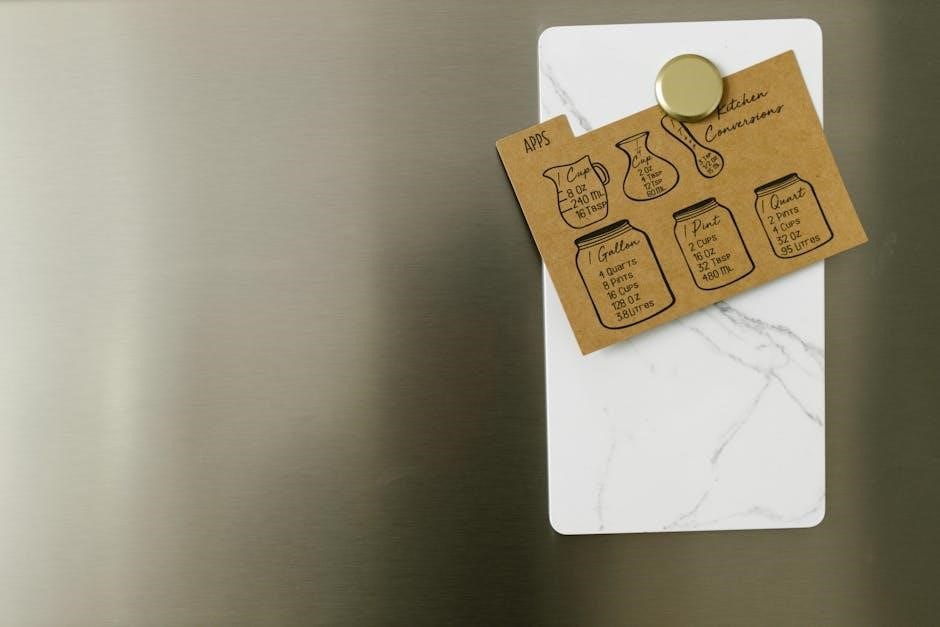
Summarizing Key Points for Perfect Fit
Accurate jacket measurements ensure a perfect fit. Measure chest, sleeve length, and jacket length carefully. Refer to size charts and consider body type, layering, and fabric. Choose styles that align with your fit preferences for optimal comfort and appearance.
Accurate jacket measurements are essential for ensuring a perfect fit. Start by measuring your chest, sleeve length, and jacket length precisely. Understanding size charts helps match your measurements to the right size. Consider your body type, as different styles suit varying physiques. Layering and fabric type also impact fit, so account for these factors. Personal preferences, such as a tailored or relaxed fit, should guide your choices. Use tools like tape measures and online guides for accuracy. Regularly update your measurements and seek assistance if needed. By following these tips, you’ll achieve a comfortable and flattering jacket fit every time.

